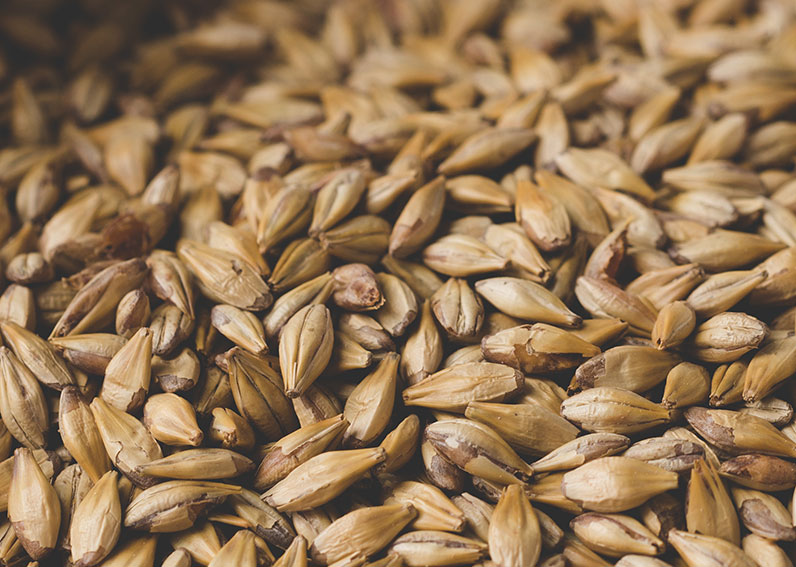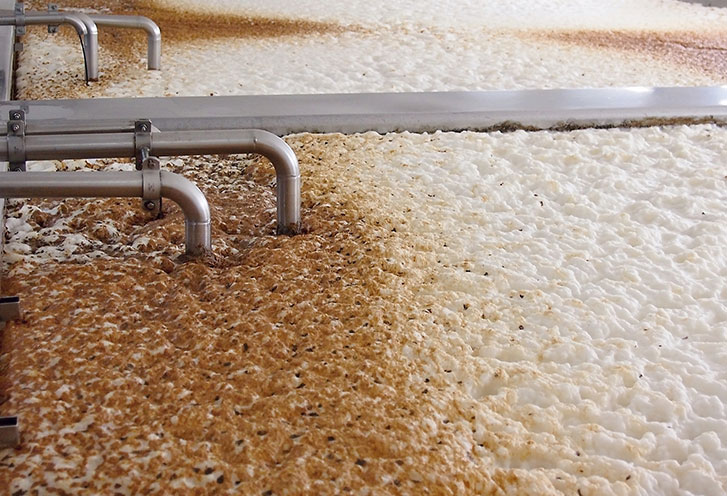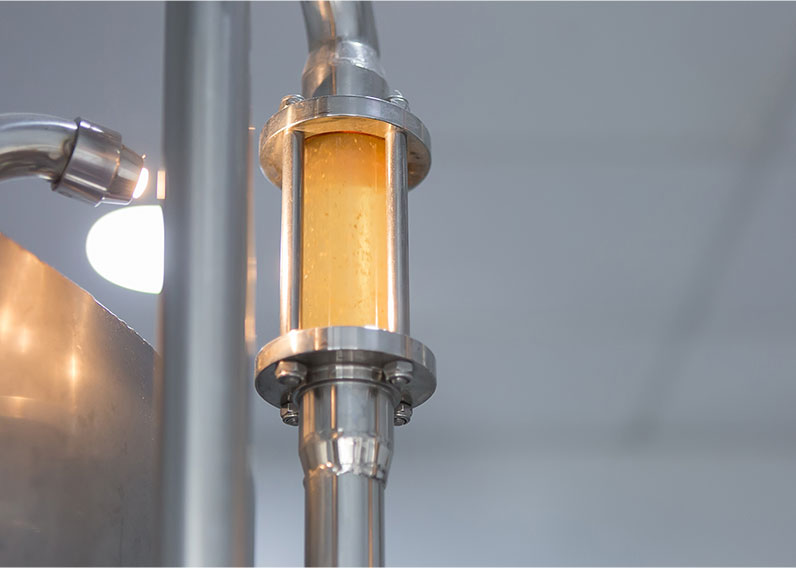BREWING
The Process

1. MALTING
First, barley grains are germinated by immersing them in water. This encourages the barley to sprout. The barley is then dried to halt the process of sprouting completely in order to release the enzymes necessary for brewing.
2. BREWING
Next, starch made from the malted barley is converted into fermentable sugars and hops are added. The mixture is set to boil and at this point in the process, it becomes what is known as wort.

3. FERMENTATION
Brewer’s yeast is added, and instantly, the yeast begins converting the sugars into alcohol and carbon dioxide. This is what makes beer carbonated. Different strains of yeast have different flavor compounds, so this is also where beers get their different and distinct flavor profiles.
4. LAGERING
The beer is kept at a low temperature for a set period of time. Once the beer is saturated with carbon dioxide, the yeast settles to the bottom of the tank.

5. FILTRATION
The remaining yeast cells are filtered out,
leaving clear beer that’s ready
to be filled into bottles, cans and kegs.